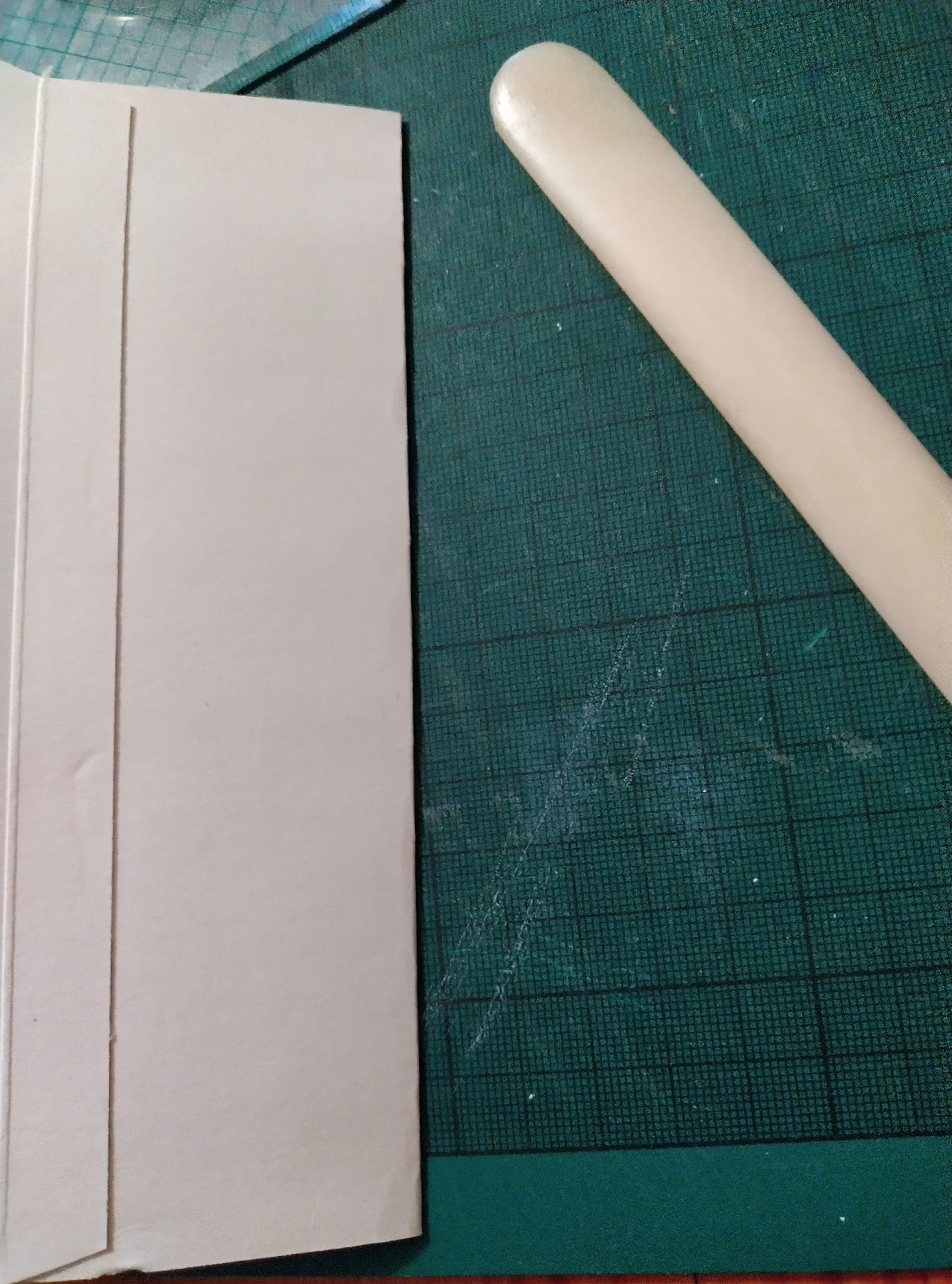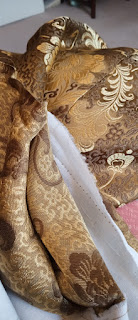BOOKBINDING - Lesson 2 17/1/21
Should you wish to listen to this blog post, please press HERE
So now you have the basics of sewing a little book under your belt... it is time to talk about paper. Hopefully you followed my suggestion of cutting different sorts of paper - and perhaps you noticed that sometimes a piece of paper cuts, or folds, more easily in one direction than the other. This is because paper has a 'grain' (rather like wood).
I don't want to disappear down the very large rabbit hole that is paper-making, but it is useful to know that whatever base material is used for making paper - wood-pulp, plant fibres, mulberry bark, cotton or indeed old paper - it is broken down to its basic fibres and mixed with a lot of water to make a slurry, which then finds its way onto some sort of fine mesh. The way the fibres are aligned in the paper-making process produces the grain. One direction will always be easier to fold on a piece of paper than another.
That is called folding along, or with, the grain. Folding the other way is going across the grain and will not be so easy, indeed you may see a slight wrinkle as the paper resists the fold.
For the purposes of bookbinding, it is important to know the direction, for two main reasons:
1) if the spine fold is along the grain, the book will open more easily and 2) when damp (ie being glued), the paper will be inclined to stretch across the grain.
If it is not obvious, cut a small piece from your paper - or indeed cardboard - about 3" or 4" square, pencilling-in a line on one edge of both the sample square and the parent sheet, for alignment.
Then lightly spray one side with water, or lay a dampened cloth over it. After a while you should see a curl forming;
this is the grain expanding. Draw a line along the sample and also on the parent sheet, for future reference.
It should be noted that cheap photocopy paper and certainly any recycled paper has had the fibres cut so short that it may not be easy to differentiate - and if that's the case, then don't worry about it. However, I would make the point that if you are going to the trouble of making something by hand, why use crap materials? {;-)
Once again, try folding paper with this in mind and see if the paper you are using allows you to fold reasonably into a little book...
For the record, if you are just making single section booklets, the grain direction is not so important. However, it becomes crucial once one progresses to thicker books...
The next installment is in the pipeline, so don't fret };-) Oh, and do feel free to comment, or get in touch.








Comments